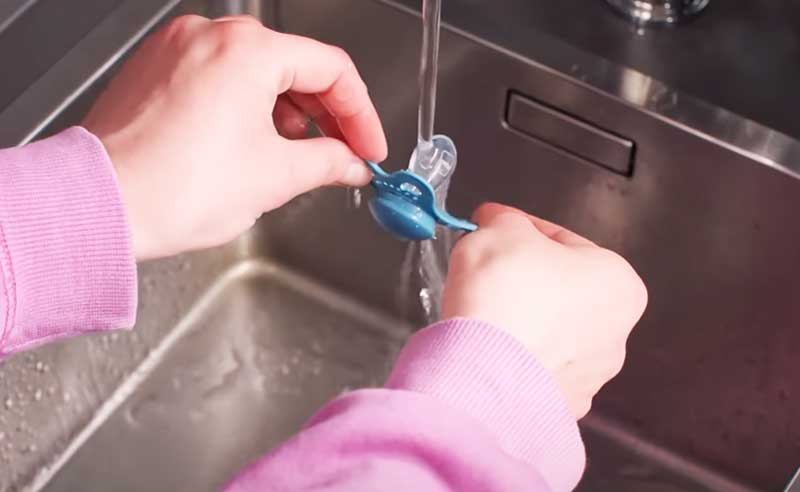Pacifiers are essential for soothing babies, but choosing the right one can be challenging. Silicone pacifiers are a top choice among parents due to their durability and safety. In this guide, we’ll answer some key questions about silicone pacifiers, including their safety, how to clean them, and the best types for your baby.
Are Silicone Pacifiers Safe for Babies?
Yes, silicone pacifiers are generally safe for babies. Made from BPA-free, food-grade silicone, they are non-toxic, hypoallergenic, and resistant to bacteria, making them ideal for babies. Their durability ensures they won't break down easily, even with prolonged use, providing peace of mind for parents.

How Do I Clean a Silicone Pacifier?
Keeping a pacifier clean is essential for your baby's health. Here’s how to maintain hygiene:
- Boiling: Boil the pacifier for 3-5 minutes to sterilize.
- Dishwasher: Many silicone pacifiers are dishwasher-safe; place them on the top rack.
- Soap and Water: For daily cleaning, wash with mild soap and warm water.
Be sure to clean the pacifier regularly to avoid bacteria buildup.

When Should I Replace a Silicone Pacifier?
Silicone pacifiers are durable, but they should still be replaced every 4-6 weeks or sooner if you notice signs of wear, such as cracks or discoloration. For safety, always inspect the pacifier before each use.

Can I Use a Pacifier During Teething?
Yes, silicone pacifiers can provide relief during teething. The soft yet firm texture is gentle on sore gums, making them a great tool for teething babies.

What is the Difference Between a One-Piece and Two-Piece Pacifier?
A one-piece pacifier is molded from a single piece of silicone, reducing the risk of small parts breaking off and becoming a choking hazard. Two-piece pacifiers are made from separate parts, which may increase the risk of detachment over time.
For safety, most parents prefer one-piece silicone pacifiers.

Can You Boil Silicone Pacifiers?
Yes, boiling is one of the best methods for sterilizing silicone pacifiers. Simply boil in water for a few minutes, which effectively kills germs and bacteria without damaging the pacifier.
What is the Best Age to Introduce a Pacifier?
Pacifiers can be introduced from birth for babies who need extra comfort. Look for pacifiers designed for your baby's age, as they come in different sizes for newborns, infants, and toddlers.
How to Choose the Right Pacifier?
Here are a few tips to select the perfect pacifier:
- Age-Appropriate: Choose pacifiers based on your baby's age.
- Orthodontic Design: Orthodontic pacifiers help support proper oral development.
- Material: Opt for BPA-free, food-grade silicone for the safest option.

Conclusion
Choosing the right pacifier for your baby involves considering safety, durability, and hygiene. Silicone pacifiers offer a great balance of these qualities, making them a popular choice for parents worldwide. By selecting an age-appropriate, one-piece pacifier and maintaining proper cleaning habits, you can provide comfort and safety for your baby.